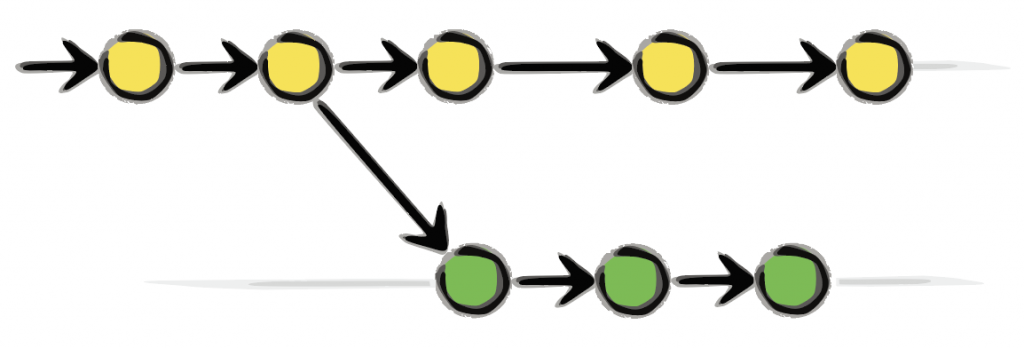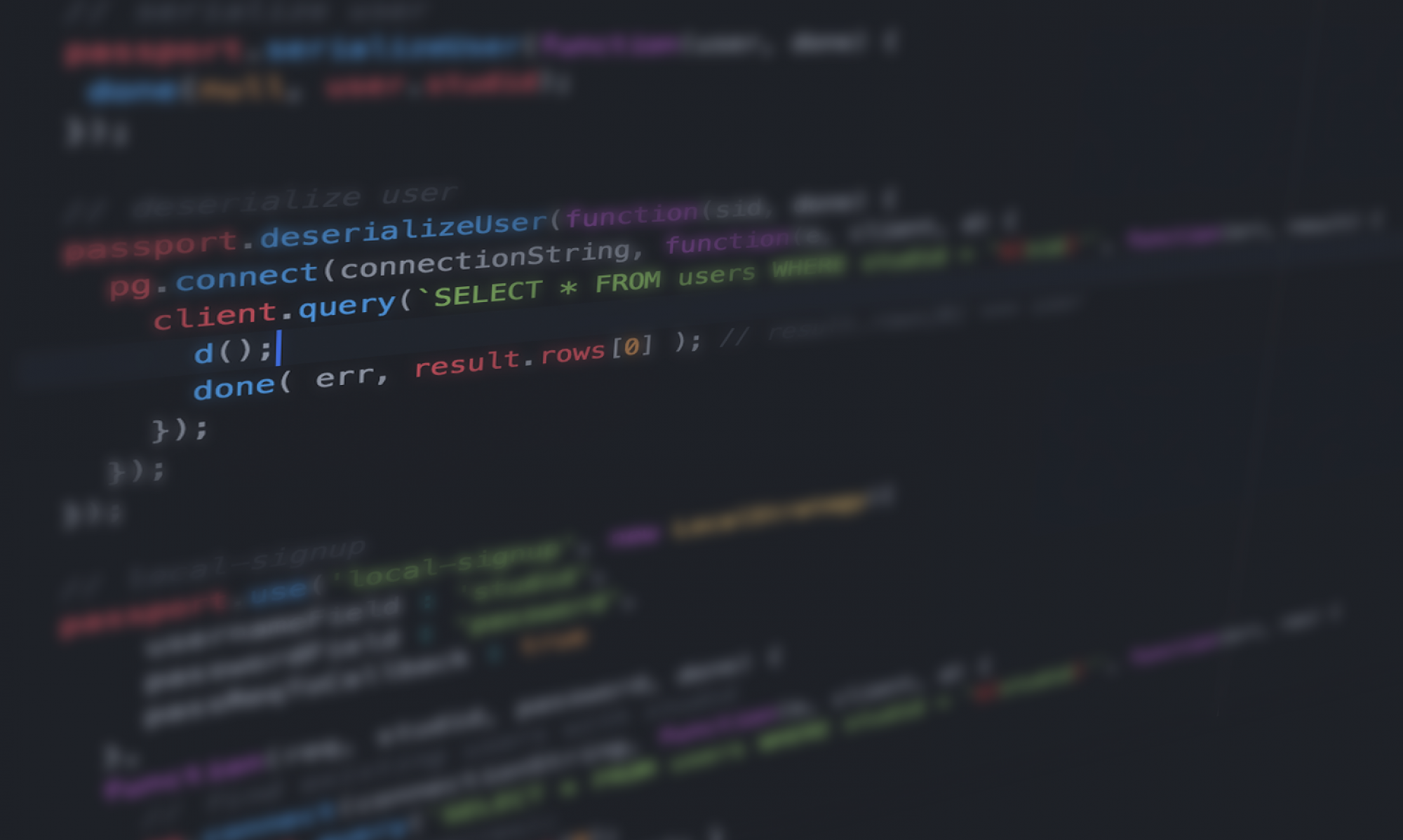Introduction
Background and Motivation
Git is the industry-leading version control system that streamlines software development and helps teams collaborate more efficiently. It provides a wide range of features to track changes, manage projects, store code, resolve conflicts, create branches/rollbacks and keep an eye on contributions from each team member. Its excellent performance, security, scalability and many implementations make it the standard version control system today. It also has powerful integrations within modern integrated development tools to help coordinate tasks such as code reviews merging or scheduling efficiently amongst multiple developers.
To my surprise, I discovered that when it comes to the fundamentals of Git, many second-year software engineering students are completely lost. They lack the collaboration skills needed for a successful project and don’t understand how crucial requesting proper merges is with this online tool. Instead of utilizing proper merge requests for documents through Git’s powerful online tooling capabilities, these same students are emailing their work in and waiting for manual merges from leaders, which disregards best practices and overlooks useful commands available at their disposal.
Overview
This project aims to equip second-year post-secondary computing science students with the basic knowledge and confidence necessary for working on team projects with an introduction to Git. Through specific workflows that reflect real-world situations, students will experience how software developers can use Git efficiently, effectively, and ethically when collaborating in a group setting. As most have no prior exposure upon starting their course in Software Engineering at my school – this proposed lesson provides them with an invaluable opportunity before participating in more extensive collaborations later in the course.
ISTE Standards
The exercise is developed to align with the International Society for Technology in Education standards for students. These standards promote students taking charge of their learning by giving them a voice and encouraging the process to be led by them. This creates an empowering environment in which they can reach new levels of achievement.
ISTE 2 Digital Citizenship
By exploring the Git-suggested workflows, students will gain a valuable understanding of working and collaborating ethically in teams. We’ll ask them to consider their rights as content producers on this platform while respecting its privacy rules, by making sure they use public/private repositories appropriately and only grant necessary access when needed. This is in alignment with ISTE standard 2a. “Students cultivate and manage their digital identity and reputation and are aware of the permanence of their actions in the digital world.”, 2c. “Students demonstrate an understanding of and respect for the rights and obligations of using and sharing intellectual property.” and 2d “Students manage their personal data to maintain digital privacy and security and are aware of data-collection technology used to track their navigation online.”
ISTE 1 Digital Citizenship
By using Git, students have the ability to interact with one another and merge their efforts on a project. This allows them to share feedback within the team and quickly implement it into their development cycle for greater overall productivity. This is in line with ISTE standard 1b. “Students use technology to seek feedback that informs and improves their practice and to demonstrate their learning in a variety of ways,” and 1c, “Students understand the fundamental concepts of technology operations, demonstrate the ability to choose, use and troubleshoot current technologies and are able to transfer their knowledge to explore emerging technologies.”
ISTE 7 Digital Citizenship
Broadly stated, ISTE standard 7 states, “Students use digital tools to broaden their perspectives and enrich their learning by collaborating with others and working effectively in teams locally and globally.” This collaborative exercise will enable students to hone their skills remotely, allowing them to experience working with peers from different backgrounds globally, the exercise centers around this core standard.
Backwards Design
We utilize the backwards design principles to create a successful learning experience (Wiggins & McTighe, 2005). This process involves three distinct stages. Firstly, our goals are aligned with accepted content standards and curriculum expectations to identify desired results. Secondly, acceptable evidence is established in order to validate that these objectives have been achieved, emphasizing knowledge over activities or covered material alone. Finally, we plan instructional experiences and instruction based on what learners need to achieve their goals.
Stage 1 Identify Desired Results
Establish Goals:
There are two main departmental learning outcomes based on this exercise:
- (LO1a) Students will be introduced to team processes and cooperative programming and understand their pros and cons.
- Students will understand the use and workflows of using Git as a collaboration tool.
- Students will collaborate on a document.
- (LO2a) Students will understand how to communicate effectively within a team.
- Students will decide on a workflow for conflict resolution.
Essential Questions:
The provocative questions that foster student inquiry, understanding and transfer of learning:
- How can you resolve conflicts or disagreements with a spouse or significant other?
- Why is it important to communicate in any relationship?
- Why is it essential to collaborate instead of working alone in a software development setting?
Understandings:
Students will understand
- The general workflow of Git.
- Why it is essential to use a collaboration tool in software development.
Knowledge:
Students will know the following:
- What a Git repository is, and what it’s used for
- The basics of collaborative development
- The Git conflict resolution process
Skills:
Students will be able to:
- Fork a project
- Push updates to branches
- Merge branches
- Create merge requests
- Communicate with teammates over git
Stage 2 – Assessment Evidence
The following are acceptable evidence of learning. We will assess the following via the six facets of understanding outlined by Wiggins (Ch4). To demonstrate mature understanding, students: can explain, can interpret, can apply, can empathize, have perspective, and have self-knowledge of the concepts.
Performance Tasks: what would be sufficient and revealing evidence of understanding?
- Students can create a branch for their own work (can apply)
- Students can create a pull request and communicate via the Git interface with the team. (can apply)
- Students can fork a project from a Git repository (can apply)
- Students can add text to a document and push it to a repo on Git (can apply)
- Students can create a merge request and communicate with others in a team. (perspective)
- Students can resolve conflicts in a file to make a finalized merged document (perspective, can apply)
- Students can remove a committed document and erase history (can apply)
Other Evidence Required: What are the types of evidence required by Stage 1 desired results?
Academic Prompts:
- A merged finalized document on the main development branch: Students will add a short profile about themselves and their development background on a pre-existing document. They will request to merge their part into the main document and deal with any conflicts. The result is a text document that contains background profiles about each of the members of the team.
- Properly merged commit tree on a new Git repository after the assignment. The commit tree on the newly created repository should resemble standard merge practices on Git and have evidence of proper communication between teammates.
- Students can write proper Git messages to communicate a commit or a merge appropriately (empathy)
Quiz and Test Items:
- Explain the Git conflict resolution process (can explain)
- Explain Git branches and when to use them (can explain)
- Describe forking, merging, rebase, revert, and reset (can explain)
Student Self-assessment
- Students will reflect on improvements to adopt within their groups for a more complex document (self-knowledge).
- Justify the current workflow and explain other workflows students could have taken to arrive at the same results (self-knowledge).
Stage 3 – Learning Experiences
These exercises are designed to get creative juices flowing and facilitate collaboration between team members. They provide specific workflows and reflections so students can see the bigger picture. They are assessed through the WHERETO standard (Wiggins, 2005):
- Where is it going?
- Hook the students
- Explorer and Equip
- Rethink and revise
- E2xhibit and evaluate
- Tailor to specific needs
- Organize for maximum engagement and effectiveness
In the classroom (Optional)
Provide each group with a poster board and have students write a brief paragraph on the poster board highlighting their common interests. Each student should write their programming experience and name on individual pieces of paper. Then, manually combine the individual papers with the poster board to create a single poster representing the group. (W,H,O)
Reflect on the following question: What difficulties might arise if we attempt to concurrently write on the poster board? (R)
Setup
Read 1.3-1.8 in the Pro Git Book (W)
- The students will complete a survey about their previous exposure to Git, command line tools, and teamwork. The exercise will begin at a different stage depending on their past experience. (W)
- Students who lack prior experience will be required to install Git. (T)
- Students who have some familiarity will need to configure Git. (T)
- An experienced student will serve as the repository owner. They will fork (or download) a markdown file for a pre-existing project description template from a repository and transfer it to a new repository accessible by the entire team. (E, T)
- Reflect on the following question: What are other ways that step 2 could have been accomplished? What are the advantages and disadvantages of each? (R, E2, O)
Experience 1: Git Basics as an individual developer
Read 2.1-2.5 in the Pro Git Book (W)
- Students will create a new markdown file that includes their answers to the self-assessment survey. (H, E, T)
- They will view the changes that they have not committed yet.
- They will commit their changes. (E)
- Students will practice un-staging a commit and re-staging it. (E, E2)
- Students will examine their remote and push their work to the main branch. They will check the main branch on the repo and see the results. (H, O)
- Reflect on the following question: What will I do if I have staged a change but want to amend it? What if I have committed a change but want to amend it? (R)

Experience 2: Git Branching
Read 3.1-3.4 in the Pro Git Book (W)
- The students will generate a new working branch and switch to it. (E)
- In the shared markdown file, students will insert a section introducing themselves. This section should highlight their strengths, developer background, interests, and sociocultural background. (E, T)
- They will then commit and push these changes to their branch. (E, O)
- Reflect on the following question: With respect to the classroom exercise, what issues may arise during this phase? What is the definition of “stashing”? (R)

Experience 3: Merge Request
- Students will initiate a merge request. (E)
- They will then wait for feedback from other group members, with every member expected to participate. (E)
- Finally, they will merge their branch into the main branch. (H, O)
- Reflect on the following question: What should you look for when a group member creates a merge request? What type of feedback would be constructive and supportive to the group member? (R, E2)

Reflection
This backwards design process was a great way to carry out this exercise. Evaluating the facets of understanding made it apparent that most assessment evidence centred around application, which makes sense since learning software is fundamental here. Incorporating an empathetic and reflective component into activities could also encourage students to think strategically about how Git can be used in collaboration and why they should use it as part of their software engineering coursework. Ultimately, my hope is that these exercises will promote better comprehension of using Git for future projects.
